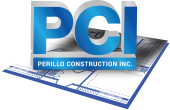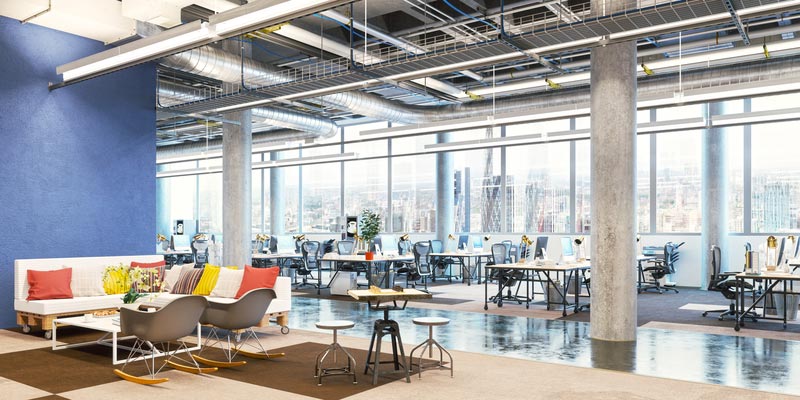Before starting your office build out you must find the perfect space to expand your business. That includes finding a space that is big enough for you today as well as next year. A common question we hear is: How much space do I need to comfortably accommodate all of my employees? The following checklist is meant to help you determine how big your office space should be.
How Much Space Do You Need In Your New Office?
Offices start as small as 100-250 square feet and work up to well over 1,000 square feet. There’s no need to waste money on space you’ll never use, but also, you don’t want to underestimate how much square footage you need, not only today but also a few years down the road.
An architect can help you plug in the proper calculations to determine how much space you require. Here are some important things to consider when determining total office build out square footage needs.
Workspace For Individual Employees
Employee workspaces must be adequate and comfortable; you don’t want your employees to feel claustrophobic all day long. An open workspace floor plan can prove functional with as little as 60 square feet per employee. If you are planning to implement partitioned workspaces, you’ll need between 80 and 110 square feet per employee.
Space For Executive Offices
On top of regular employee workspaces, how many executive offices do you need? Individual offices for top-level employees are becoming less favorable these days, as companies work to break down the walls associated with hierarchies to create a more open-model office environment. That being said, executive offices are far from dead and remain an important component in certain industries and business models. For instance, private office space is fundamental if you regularly partake in confidential discussions.
The average amount of space allocated to executive offices is between 150 and 250 square feet.
Space For Conference Rooms
How many employees sit in on the average work conference? You can assume that each employee will need between 25 and 30 square feet of space in the conference room. The best way to determine the size of your conference room is to make a space that can comfortably fit all of your employees at one time. If you have plans for expansion in the near future, make sure that your conference room is large enough to accommodate additional employees.
Depending on the nature of your business you might need more than one conference room. It’s perfectly normal to set up one conference room that is large enough to accommodate everyone, along with a smaller conference room for more intimate meetings.
Space For Break Rooms & Common Spaces
Your budget, number of employees and industry will influence the types of common spaces you implement. Some examples of important common spaces include:
-Closets for storage
-File rooms
-Space for large equipment, such as copiers, shredders and so forth
-Mailroom
-Library/resource center
-Server room
-Break room for meals and relaxing
-Employee restrooms and/or customer restrooms
Space For Reception Areas
Generally speaking, the receptionist area is between 125 and 200 square feet. This size reception area will accommodate the receptionist as well 2-4 additional workers. If you need more space, 200 to 300 square feet will generally work for a receptionist and 6 to 8 additional staff members.
What Size Building Will Provide The Most Functionality To Your Business?
Open floor plans make better use of smaller square footage, but that doesn’t mean it’s the right call for your business. Prior to finding the perfect office, take the following questions into consideration.
Do you want a traditional office or an open floor plan office?
Traditional offices are more closed off with individual offices and/or partitioned cubicles. This takes up more space but might be better for your business model. On the other hand, more modern and open floor plan offices require less square footage because they don’t have as many individualized spaces. You don’t have to go one-way or the other; you can create an office build out that falls somewhere in between.
How much do you plan to grow in the future?
Don’t just calculate space needs based upon company size today. Take into account where you are headed in the future and how much growth your new office needs to accommodate in the coming years.
Do you require any special amenities?
Does your business require a full server room or a place to entertain clients? Every business has different needs that must be taken into consideration when finding the ideal building to set up shop. Don’t forget to add these additional amenities into your calculations regarding necessary square footage.

